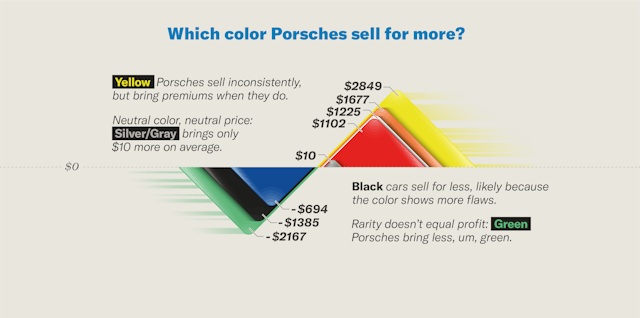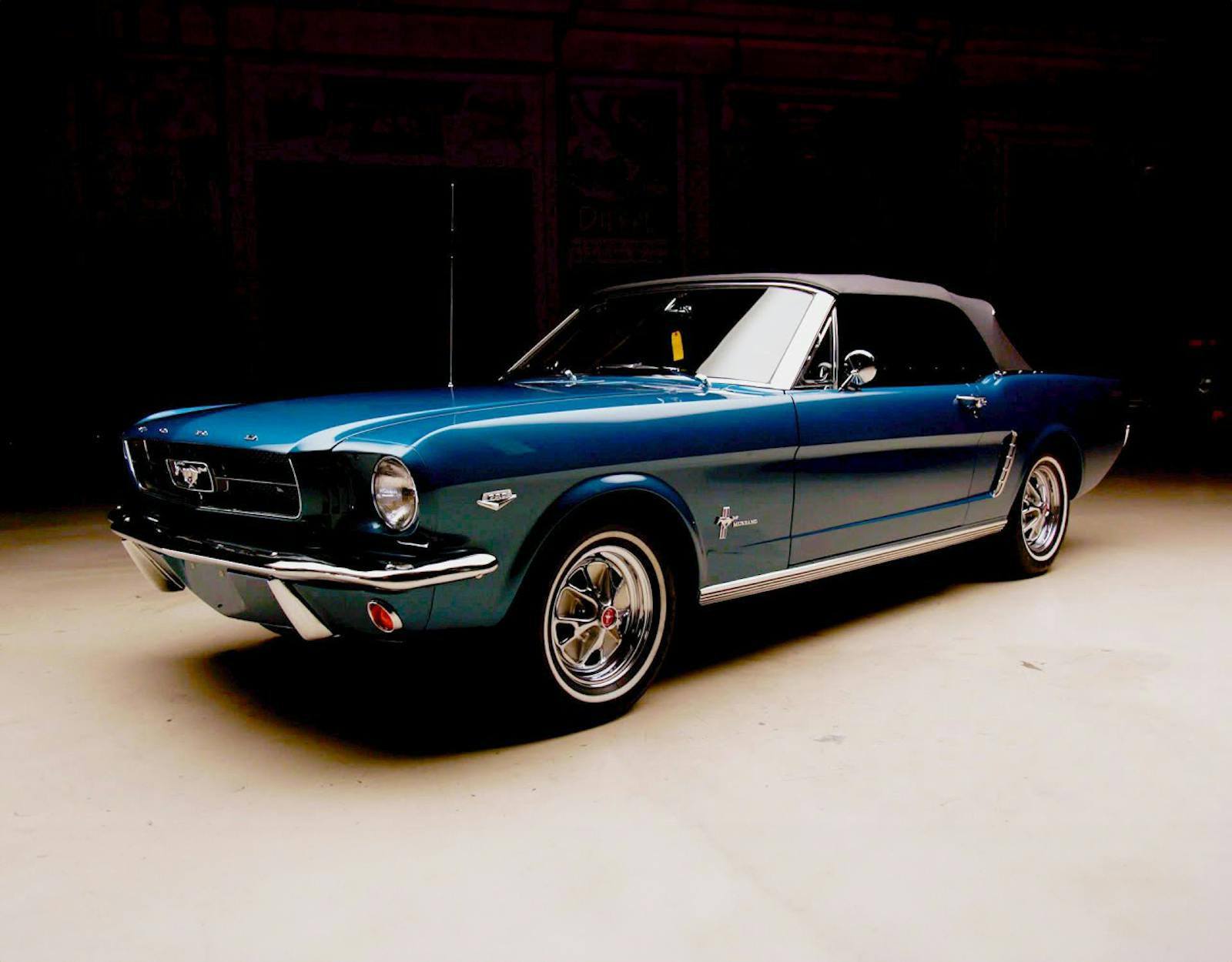Insider Insight: Does paint color really impact value?
Choosing a car color is a near universal experience—and a mundane one for most. More than three out of every four cars sold in North America last year were white, black, silver, or gray, according to chemical company BASF. Yet for those of us who see cars as part of our identity, paint color is something more. Drive a Hugger Orange Camaro, a Laguna Seca Blue BMW, or even a Dorado Brown Saab, and you’re saying something about yourself and your very particular taste.
We at Insider wondered something else: Does a car’s color impact its value? Of course, we’ve all seen the case studies—the station wagon that attracted extra bids because it wore just the right shade of brown. But does paint color impact color car values on a more widespread basis?
To find out, we examined 3500 sales at live auctions and online auction platforms such as Bring a Trailer, Cars & Bids, and PCARMARKET dating back to 2013. We focused on Porsche, a marque famous for letting its customers taste the rainbow. There are websites and events dedicated to the wide variety of shades that Porsche has painted its cars.
Our clear conclusion is color indeed correlates to differences in value.

The winner? Yellow. Porsches painted that color tended to sell for nearly $3000 more than average. There’s a caveat, though: Yellow Porsches also seem harder to sell than other colors, with a sell-through rate of 63.6 percent, compared to an average of 70.8 percent.
At the other end of the spectrum, black Porsches tended to earn $1385 below average, suggesting more than a few failed the “detailers final exam.” Another surprise: The so-called “safe” colors—white, black, and silver/gray—are at best mid-pack when it comes to sell-through rates and value. So, if that silver 997 really speaks to you, go for it, but don’t buy it because you expect a surer return on your investment.
For an even deeper dive, including a model-by-model breakdown, head over to Hagerty Insider.


